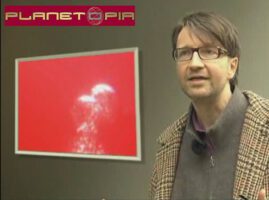The interrelationship between humans and their environment underlies the structure of our nervous system. We receive signals from the environment via the eye movements of our eyes, which are controlled by the brain. In turn, the brain needs these signals to control attention. This creates a self-referential system through which we generate spatial-visual information. We can control this process at will by choosing our point of view. Around 60% of the approximately 500 trillion nerve cells in our brain process spatial-visual information during all waking and dreaming phases. New observation techniques have enabled us to begin to understand these processes today.
In the process of perception, the environmental data from our eyes first reaches the brain stem, where it is compared with the data from our other senses and pre-evaluated emotionally. The signals are processed further in the visual cortex and then transmitted in parallel to our memory areas via two main processing streams. From there they reach the motor and emotional control centers and become visible to us. The “where-stream” running to the declarative memory serves the perception of movement, action and position, while the “what-stream” running to the semantic memory enables us to identify things according to their meaning. This structuring of our descriptive knowledge is reflected in the semantic structure of meaning and the syntactic structure of action of word language.
Our socio-cultural environment has a much higher degree of pre-structuring than nature, as we have adapted it to our needs through the process of observation and design. Settlement areas, everyday objects, works of art and communication media have developed in a process of intergenerational understanding. They can therefore also communicate their purpose to us in a vivid way.


